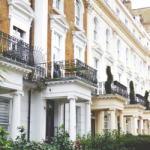Preserving our Heritage
We review the importance of listed buildings and understanding the requirements and responsibilities for property owners…
The history and heritage of the United Kingdom is hugely important. It’s one of the main reasons that we have a thriving tourism industry (when we’re not in the midst of a global pandemic that is!) – and pre-Covid, the Tower of London remained the most-visited ‘paid for’ attraction in the UK.
But of course history and heritage is not just about the stately homes and castles of the UK – it is bound up in more ‘ordinary’ homes too, and it is not that unusual for would-be home owners to be considering purchasing a listed building.
A listed building, or listed structure will have been placed on one of four statutory lists, depending on where you live – in England, this list is maintained by Historic England, in Scotland it is held by the Historic Environment Scotland, in Wales it’s cadw.gov.wales/Cadw, and the Northern Ireland Environment Agency, in Northern Ireland.
There are around 400,000 listed buildings in England alone, according to Historic England, and 92% are Grade II. If you buy a listed building, you will not be able to extend, demolish or alter it without specific permission from the local planning authority. The level of restriction to some extent will depend on the classification:
- Grade I buildings are of exceptional interest
- Grade II* are particularly important buildings of more than special interest
- Grade II buildings are of special interest
There is often confusion amongst homeowners, with many believing restrictions only apply when undertaking works to the outside of a listed building. When a building is listed it is both the external and internal fabric that is of importance and therein protected.
The outside of the building will definitely be of interest because it is often public facing. Therefore any proposed alterations will attract attention from the local planning authority and its Conservation Officer. Internally, you may also be restricted and certainly you must get written consent if you want to change the layout at all, remove walls, or expose timber or brickwork. If you are planning on installing double glazing, you must also get consent. Although there is generally opposition to such proposals from Conservation Officers, such products are becoming more and more sympathetic and well-designed and constructed that they are sometimes justified. You will also need to check if you can remove or rebuild internal features such as fireplaces or panelling.
Before you do anything…
If you have just bought or are considering buying a listed building and want to make alterations, the first thing you must do is make contact with the local planning authority’s Conservation Officer with details of what you plan to do.
They will be able to confirm whether or not you will need Listed Building Consent and will also be able to give you an idea of whether your application is likely to succeed. This simple step will save you a lot of time and money!
When considering whether to grant consent, the local planning authority will review how desirable it is to preserve the building, its surroundings, and the things that make it special, whether that be historical or architectural, so these are the factors you should also consider when making your plans. It pays to do your homework.
What you need to know
Carrying out any work on a listed building without consent from the local authority is a criminal offence. Apart from the fact that you could be prosecuted and fined, you are likely to have to reverse all the work carried out at your own expense. Another point to consider is that you will find it virtually impossible to sell a property that has had unauthorised work carried out.
If you are in any doubt at all about making changes to a listed building, it is worth appointing a planning consultant, who can work in conjunction with the conservation officer and specialist contractors to make sure the work is done to the correct specifications. You can also work with a planning consultant to engage with the Conservation Officer at an early stage, to appraise whether the proposal is acceptable in principle, and what if any issues would need to amended or negotiated.
Other things to consider
- Make sure you have the correct buildings insurance for a listed property – you may have to use a specialist company, as any damages to your home will need to be repaired in accordance with listed building regulations
- If you are buying a listed property, make sure you have proof of listed building consent for any works previously carried out
- Keep proof of all permissions, contractors used, materials used and so on – it will be important information if you ever sell
- Be aware that sometimes the garden and surroundings can be protected by the listing, so do check to make sure that things like trees, walls, and gates aren’t covered before you carry out any landscaping
- Check out the guide to listed buildings ownership at Historic England which contains lots of useful information
If you would like to discuss your own project with us, or just find out more about what we do, please continue to browse the website or drop us an email to: info@apexplanning.co.uk without obligation.

